ESC guidance for the diagnosis and management of cardiovascular disease during the COVID-19 pandemic: part 2-care pathways, treatment, and follow-up
- PMID: 34791154
- PMCID: PMC8690006
- DOI: 10.1093/eurheartj/ehab697
ESC guidance for the diagnosis and management of cardiovascular disease during the COVID-19 pandemic: part 2-care pathways, treatment, and follow-up
Erratum in
-
Corrigendum to: European Society of Cardiology guidance for the diagnosis and management of cardiovascular disease during the COVID-19 pandemic: part 1-epidemiology, pathophysiology, and diagnosis; and ESC guidance for the diagnosis and management of cardiovascular disease during the COVID-19 pandemic: part 2-care pathways, treatment, and follow-up.Eur Heart J. 2022 May 7;43(18):1776. doi: 10.1093/eurheartj/ehab866. Eur Heart J. 2022. PMID: 34927669 Free PMC article. No abstract available.
Abstract
Aims: Since its emergence in early 2020, the novel severe acute respiratory syndrome coronavirus 2 causing coronavirus disease 2019 (COVID-19) has reached pandemic levels, and there have been repeated outbreaks across the globe. The aim of this two part series is to provide practical knowledge and guidance to aid clinicians in the diagnosis and management of cardiovascular (CV) disease in association with COVID-19.
Methods and results: A narrative literature review of the available evidence has been performed, and the resulting information has been organized into two parts. The first, which was reported previously, focused on the epidemiology, pathophysiology, and diagnosis of CV conditions that may be manifest in patients with COVID-19. This second part addresses the topics of: care pathways and triage systems and management and treatment pathways, both of the most commonly encountered CV conditions and of COVID-19; and information that may be considered useful to help patients with CV disease (CVD) to avoid exposure to COVID-19.
Conclusion: This comprehensive review is not a formal guideline but rather a document that provides a summary of current knowledge and guidance to practicing clinicians managing patients with CVD and COVID-19. The recommendations are mainly the result of observations and personal experience from healthcare providers. Therefore, the information provided here may be subject to change with increasing knowledge, evidence from prospective studies, and changes in the pandemic. Likewise, the guidance provided in the document should not interfere with recommendations provided by local and national healthcare authorities.
Keywords: ACE2; Acute coronary syndromes; Arrhythmias; Biomarkers; COVID-19; Cardiogenic shock; Heart failure; Myocarditis; Pulmonary embolism; Thrombosis; Venous thromboembolism.
This article has been co-published with permission in the European Heart Journal and Cardiovascular Research. © The European Society of Cardiology 2021. All rights reserved. The articles are identical except for minor stylistic and spelling differences in keeping with each journal’s style. Either citation can be used when citing this article.
Figures


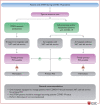


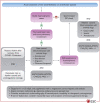
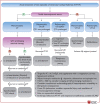

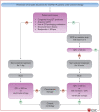
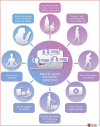
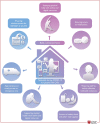
References
-
- Mazer SP, Weisfeldt M, Bai D et al. Reverse CPR: a pilot study of CPR in the prone position. Resuscitation 2003;57:279–285. - PubMed
-
- Chioncel O, Parissis J, Mebazaa A et al. Epidemiology, pathophysiology and contemporary management of cardiogenic shock—a position statement from the Heart Failure Association of the European Society of Cardiology. Eur J Heart Fail 2020;22:1315–1341. - PubMed
-
- Collet JP, Thiele H, Barbato E et al.; ESC Scientific Document Group. 2020 ESC Guidelines for the management of acute coronary syndromes in patients presenting without persistent ST-segment elevation. Eur Heart J 2021;42:1289–1367. - PubMed
-
- Ibanez B, James S, Agewall S et al.; ESC Scientific Document Group. 2017 ESC Guidelines for the management of acute myocardial infarction in patients presenting with ST-segment elevation: the Task Force for the management of acute myocardial infarction in patients presenting with ST-segment elevation of the European Society of Cardiology (ESC). Eur Heart J 2018;39:119–177. - PubMed

